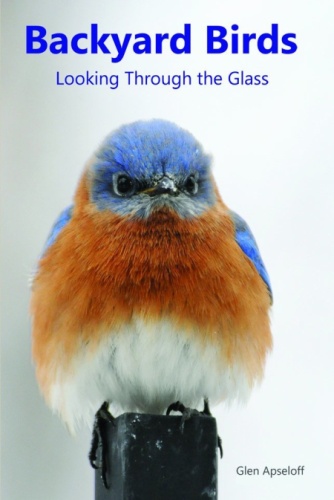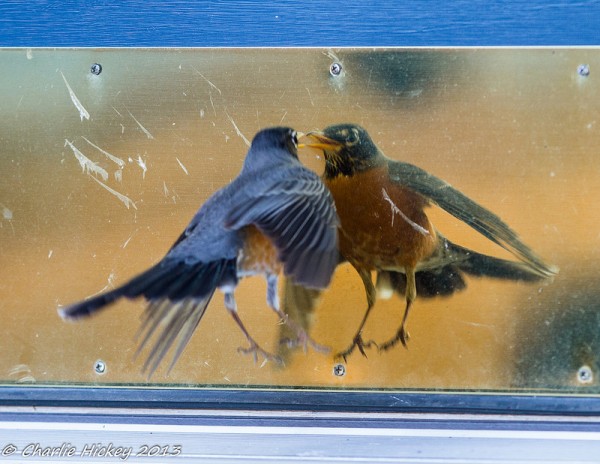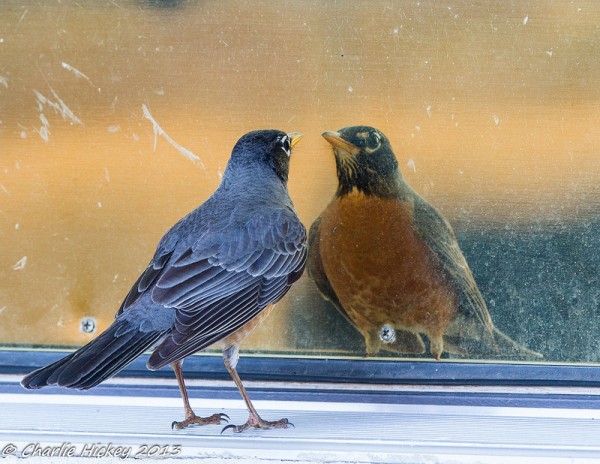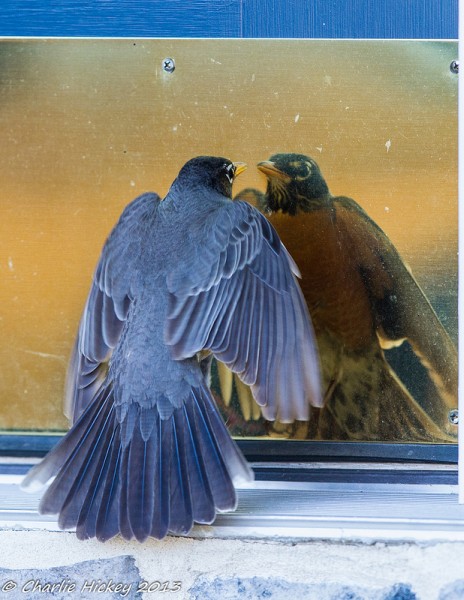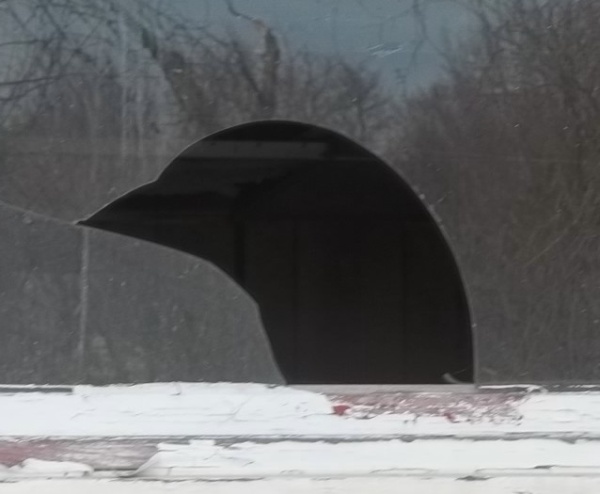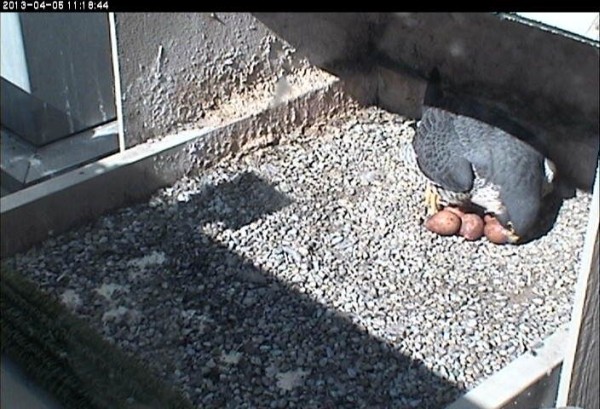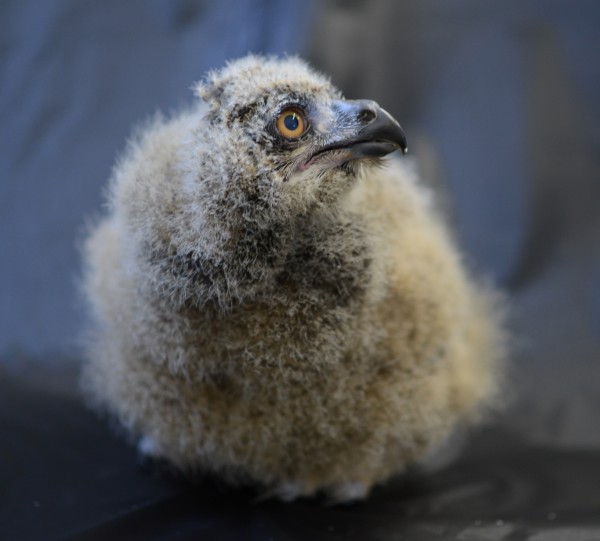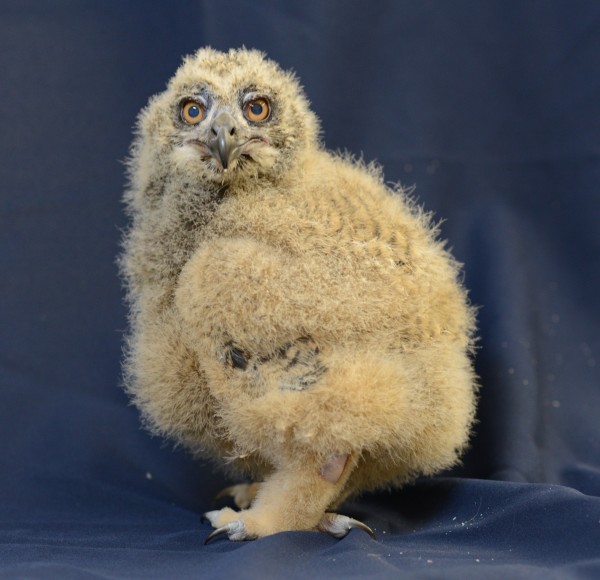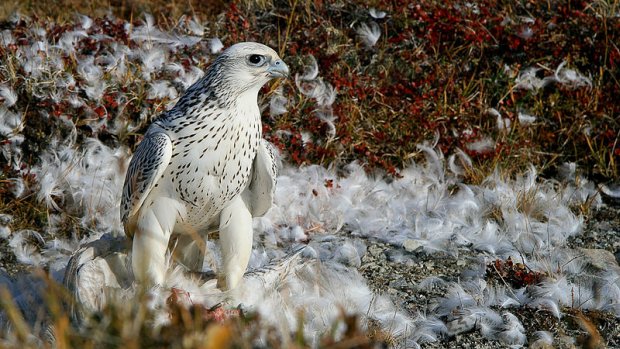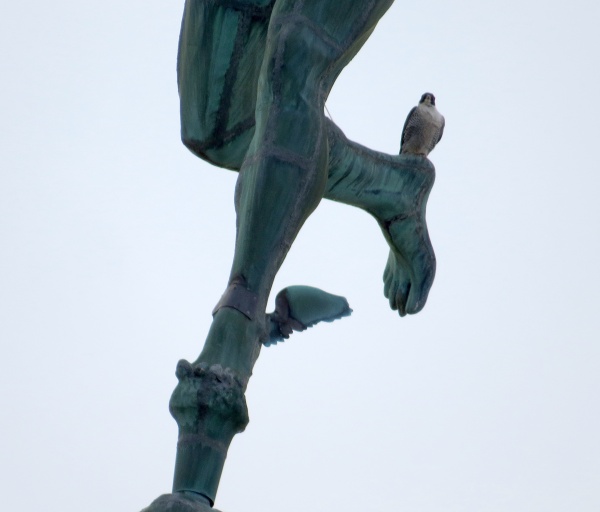I blog about birds Outside My Window. Glen Apseloff went a step further and photographed the birds outside his window.
Several years ago Apseloff set himself the challenge of photographing birds in his backyard in Powell, Ohio with an added twist — all the photos had to be taken through the window glass and none could use a flash.
He and his wife planted their garden for birds and set out the feeders with care. The birds came to visit, some quite close. The result is his book entitled Backyard Birds, Looking Through the Glass.
Accompanying more than 120 photos are descriptions of the birds’ plumage, their behavior, the foods he’s seen them prefer, and his experience watching them. Occasionally he gives tips on photography. For instance, “Around my house dark-eyed juncoes usually feed on dropped finch food rather than directly from feeders. Males tend to be darker than females; females have more brown or a paler black in their plumage. Males can be challenging to photograph in the snow and in bright sunlight because of the contrast between white and black.”
Glen’s book is like an outing to his backyard. The birds are familiar and intriguing, often so close we can see their eyelashes. As on all outings I like to pick a “Best Bird.” My favorite: The pileated woodpecker on page 96.
There are beautiful birds outside Glen Apseloff’s window.
(cover of Backyard Birds Looking Through the Glass by Glen Apseloff)
